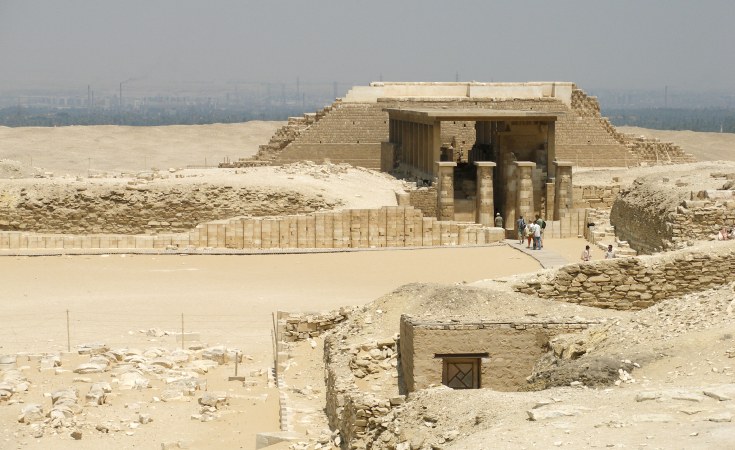Egyptian archaeologists have uncovered a Pharaonic tomb near the capital Cairo containing a gold leaf-covered mummy that had remained closed for 4,300 years. It's believed to be one of the oldest a most complete mummies ever discovered in Egypt.
The remains were discovered at the bottom of a 15-metre shaft in a recently uncovered group of tombs at the Saqqara necropolis, south of Cairo.
"This mummy may be the oldest and most complete mummy found in Egypt to date," Zahi Hawass, Egypt's former antiquities minister, said in a statement on Thursday.
The mummy, of a man named Hakashepes, was covered in layers of gold and concealed within a large limestone sarcophagus, Hawass said. It had been sealed in mortar for more than four millenia "just as the ancient Egyptians left it".
Three other tombs were found at the vast Saqqara burial site.
The largest is said to belong to a priest, inspector and supervisor of nobles called Khnumdjedef.
Another belonged to a senior palace official called Meri who was given the title "secret keeper", allowing him to carry out special religious rituals.
5th and 6th dynasties
Other major findings from the excavation include statues, amulets, and a well-preserved sarcophagus.
Hawass said the finds date from the fifth and sixth dynasties, corresponding to the 25th to 22nd centuries BC.
Situated on the banks of the Nile, Saqqara was an active burial ground for more than 3,000 years and is a Unesco World Heritage Site.
It is home to more than a dozen pyramids - including the Step Pyramid where the mummy was found.
Thursday's unveiling comes amid a flurry of new discoveries announced by Egyptian authorities over the past week.
Near the southern city of Luxor, authorities said they found dozens of burial sites from the New Kingdom era, dating from 1800 B.C. to 1600 B.C. The ruins of an ancient Roman city were discovered nearby, it said.
Teenage boy
In a separate announcement Tuesday, a group of scientists from Cairo University revealed previously unknown details about a mummified teenage boy dating to about 300 BC.
CT scans enabled the team to shed new light on the boy's high social status, revealing intricate details of the amulets inserted within his mummified body and the type of burial he received.
The sarcophagi and statues will be moved to the Great Egyptian Museum near the Giza pyramids. It is due to open this year and is expected to pull in 30 million tourists a year by 2028.
Egypt has unveiled a string of archaeological discoveries in recent years in a bid to breathe new life into a tourism industry hard hit by the Covid-19 epidemic.
It is currently suffering from the fallout from the war in Ukraine. Both Russia and Ukraine used to make up a large number of tourists to Egypt.


